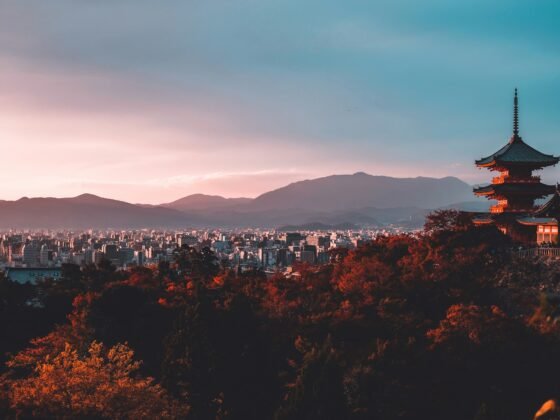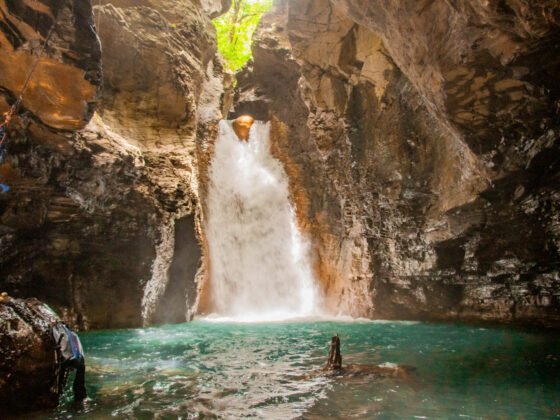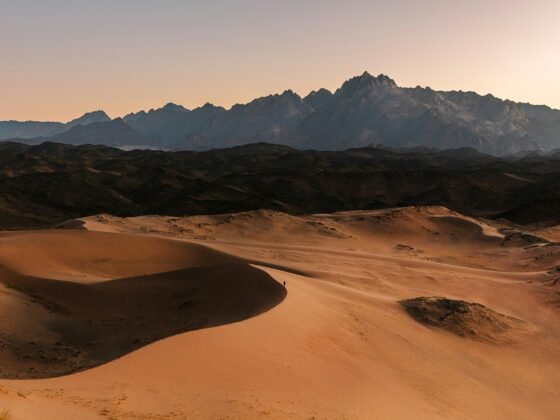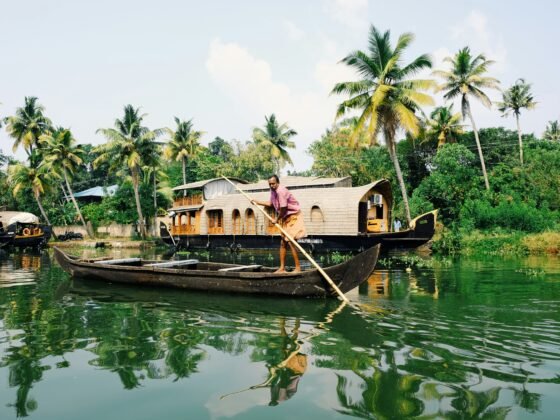One of the PureTravel writers, Robert, spent three years in Morocco working as a mountain guide. He’s climbed Toubkal on numerous occasions, spent two Christmas with the bedouin of the Jebel Sahro and lived in the souk of Marrakech. He’s trekked in searing heat and through heavy snow storms and enjoyed the enduring friendship of his berber colleagues.
The Atlas Mountains stretch across Morocco, offering an incredible variety of landscapes, from snow-capped peaks and deep gorges to arid desert ranges and picturesque villages. This region is a paradise for hikers, climbers, and adventure seekers, while also offering rich cultural experiences in traditional Berber villages. In this guide, we’ll cover how to get to the Atlas Mountains, the different ranges, the fascinating wildlife and conservation efforts, the unique Berber culture, and what to expect from trekking in this awe-inspiring part of North Africa.
Getting to the Atlas Mountains
From Marrakech
Marrakech is the primary gateway to the High Atlas and Anti-Atlas Mountains. Here are the most common ways to reach the mountains from the city:
- By Car or Taxi: Renting a car or hiring a taxi is the easiest and most flexible option. Imlil, the gateway to Jebel Toubkal, is about a 1.5- to 2-hour drive from Marrakech. For the Anti-Atlas, the scenic town of Tafraoute is about six hours south.
- By Bus: Public buses and shared taxis leave from various bus stations in Marrakech, such as Bab er-Rob and Sidi Mimoun, heading towards towns like Asni (for Imlil). You may need to switch to a shared taxi for the final stretch to your destination.
- By Tour: Many operators in Marrakech offer organized treks or day trips into the Atlas Mountains. These tours often include transportation, guides, and accommodation.
From Agadir
Agadir is another good starting point, particularly for the Anti-Atlas or the southern coastal regions:
- By Car: Driving from Agadir to Tafraoute or deeper into the Anti-Atlas takes around four hours. The journey is stunning, with ever-changing landscapes.
- By Bus: CTM and Supratours buses travel from Agadir to Tafraoute, but bus schedules may be limited.
From Ouarzazate
For the eastern High Atlas and Jebel Sahro regions, Ouarzazate is the best hub:
- By Car: A drive to the Dades Valley, Todra Gorge, or Jebel Sahro takes about two to three hours from Ouarzazate.
- By Taxi or Bus: Shared taxis and buses connect Ouarzazate to smaller towns such as Boumalne Dades and Tinghir.
Flights
While there are no direct flights to the Atlas Mountains, you can fly into Marrakech, Agadir, or Ouarzazate and continue your journey by car, taxi, or bus.
The Different Mountain Ranges: Anti-Atlas, High Atlas, and Jebel Sahro
The Anti-Atlas Mountains
The Anti-Atlas is a lower and easier range to trek, offering more accessible hiking trails than the High Atlas. This area is home to several kasbahs, ancient mountaintop fortresses now turned into charming hotels and guesthouses, perfect for exploring the region.
One of the highlights is the Lion’s Head, near the town of Tafraoute. This mountain presents two challenges: climbers can attempt the steep south face, while hikers can take the “normal route” to the summit. Another key attraction in the Anti-Atlas is the famous Blue Rocks, an art installation created by Belgian artist Jean Veran, turning desert boulders into a colourful panorama. A half-day walk from Tafraoute will take you to this striking site.
The High Atlas Mountains
More experienced trekkers looking for a challenge will find the High Atlas to be North Africa’s ultimate trekking destination. The range includes Jebel Toubkal, the highest peak at 4,167 metres. Ascending Toubkal takes two days and, while not overly technical, it’s advised to hire a local guide unless you are an experienced mountaineer. Even in the summer months, temperatures can be cold, and altitude sickness is a risk above 3,000 metres if you don’t acclimatize properly.
The High Atlas is also known for its deep gorges, like the Todra and Dades gorges, and its scattered Berber villages, perched on mountainsides surrounded by olive and apple orchards. A visit to these villages offers an authentic cultural experience—much more comfortable than sleeping on a cold mountainside!
Imlil, a picturesque village nestled in the High Atlas, is the usual starting point for Toubkal ascents. The best time to trek the High Atlas is between April and June or in September and October. Summers can be stormy with a risk of floods, while winter brings snow, blocking most trekking routes.
The Jebel Sahro
For those seeking a more remote adventure, the Jebel Sahro range between the High Atlas and the Sahara Desert is a stunning, rugged alternative. This lesser-known range is filled with jagged peaks, volcanic formations, and deep gorges, offering a more isolated and wild trekking experience. The region is also home to fascinating wildlife like Barbary sheep and golden eagles. Winter is the ideal time to visit, as the cooler temperatures are perfect for trekking, unlike the summer heat that scorches the lower altitudes.
Wildlife and Conservation in the Atlas Mountains
The Atlas Mountains are teeming with wildlife, much of it unique to this region. One of the most famous species is the Barbary macaque, which inhabits the cedar forests of Ifrane National Park in the Middle Atlas. These monkeys play an important role in maintaining the forest ecosystem. The elusive Barbary sheep, or aoudad, is found in more remote areas like Jebel Sahro, navigating steep, rocky cliffs with ease.
Birdlife is abundant, with golden eagles soaring over the peaks and bearded vultures gliding through the deep gorges, particularly in Toubkal National Park. The endangered northern bald ibis can sometimes be spotted in Souss-Massa National Park, one of the key areas for its conservation.
Conservation efforts in the Atlas are vital, with habitat loss and climate change threatening the local biodiversity. Reforestation efforts, such as those in Ifrane National Park to protect the cedar forests, and sustainable farming practices are key initiatives to preserve the delicate ecosystems of the region. When trekking, visitors are encouraged to support eco-friendly lodges and responsible trekking companies, ensuring that the Atlas Mountains remain a refuge for wildlife and local communities.
Berber Culture in the Atlas Mountains
The Berbers, or Imazighen, have lived in the Atlas Mountains for centuries, and their vibrant culture is still very much alive today. Visitors can experience this rich heritage by exploring traditional Berber villages and kasbahs scattered throughout the region.
In the High Atlas, the village of Imlil is a prime example of Berber life, with its stone and clay houses, lush terraced fields, and warm hospitality. Staying in a traditional guesthouse is a great way to learn more about local customs and sample Berber cuisine, such as tagine and mint tea.
Further south in the Anti-Atlas, the town of Tafraoute is known for its pastel-coloured Berber homes set against a backdrop of pink granite boulders. The town serves as a base for exploring nearby kasbahs and is also a hub for Berber crafts and argan oil production.
One of the most stunning examples of Berber architecture is Aït Benhaddou, a UNESCO World Heritage site on the edge of the High Atlas. This ancient ksar (fortified village) is famous for its earthen buildings and maze-like streets. Many of the kasbahs, such as Kasbah Amridil in Skoura and Kasbah Tifoultoute near Ouarzazate, have been converted into boutique hotels, where visitors can enjoy luxurious stays while soaking in the region’s architectural heritage.
What to Pack for a Trek in the Atlas Mountains
For short treks, a comfortable pair of walking shoes will generally suffice, but for longer hikes or more rugged terrain, you’ll want to invest in sturdy hiking boots. The Atlas Mountains, especially the High Atlas, can experience extreme weather changes, so packing layers is essential. Even in the summer, the high-altitude regions can be bitterly cold, and during the colder months, snow blocks many of the trekking routes.
Morocco is a conservative country, so be mindful of local customs—shorts are generally considered inappropriate for both men and women. Since the Atlas Mountains are close to the Sahara Desert, it’s essential to carry plenty of water. If you’re planning a multi-day trek, many villages in the Atlas offer trekking shops where you can rent equipment like tents, sleeping bags, and camp stoves.
Conclusion
Trekking in the Atlas Mountains offers a unique blend of adventure, wildlife, and cultural immersion. Whether you’re scaling the lofty heights of Jebel Toubkal, wandering through the surreal landscapes of the Anti-Atlas, or exploring the remote and rugged Jebel Sahro, the Atlas Mountains will leave you with unforgettable memories. With a rich Berber heritage, diverse wildlife, and breathtaking scenery, a journey into the Atlas is a true escape into one of Morocco’s most fascinating regions.
Photo by Patrick Ogilvie on Unsplash












